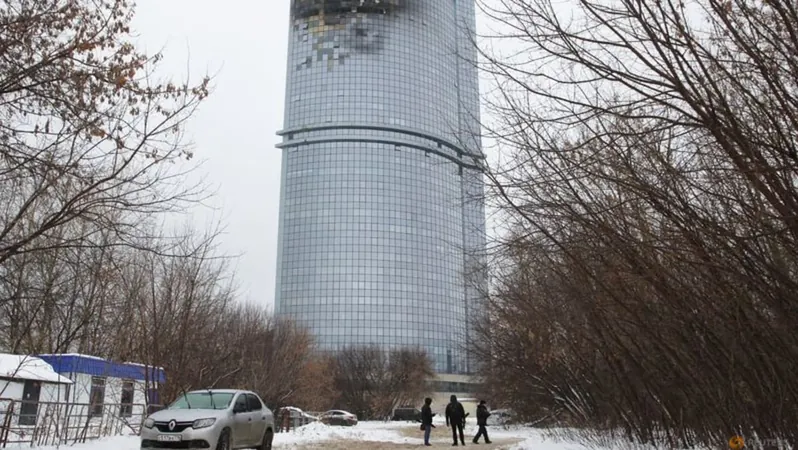
The Future of Space Travel: NASA and Airbus Revolutionize Manufacturing with 3D Printing in Space
2024-12-24
Author: Ming
Introduction
In a groundbreaking advancement earlier this year, NASA, Airbus, and the European Space Agency (ESA) achieved a historic goal: the successful 3D printing of the first metal component in space. This remarkable feat marks a significant leap forward in the field of space manufacturing, paving the way for an exciting new era in long-duration space exploration.
The Need for Innovation in Space Logistics
As the demand for extended missions to the Moon, Mars, and beyond grows, the need for innovative solutions in space logistics becomes critical. Traditional supply methods are impractical for prolonged journeys; a staggering 7,000 pounds of spare parts are needed annually aboard the International Space Station (ISS), while an additional 39,000 pounds are stored on Earth. 3D printing offers a transformative remedy: the ability to fabricate necessary parts on demand, directly in space, thus significantly reducing the weight and cost of supplies for deep-space missions.
Challenges of 3D Printing in Zero Gravity
However, the implementation of additive manufacturing in zero gravity presents numerous challenges. Engineers at Airbus faced the monumental task of miniaturizing a metal 3D printer to fit within the confined space of the ISS's Columbus module. The operational safety considerations were paramount; the printer is housed in a sealed metal box to carefully regulate oxygen levels and utilize nitrogen to mitigate fire risks and prevent metal oxidation.
Innovative Printing Technology
The temperatures involved in metal 3D printing can reach stunning heights — over 1,200°C for certain alloys, drastically surpassing the 200°C threshold for plastic. To counter the complications posed by microgravity, the team opted for wire-based printing technology, an ingenious choice that allows for operation without the reliance on gravity, unlike conventional powder-based methods.
Ensuring Safety in Space
In addition, the team devised innovative strategies to capture potentially hazardous printing fumes, ensuring the ISS's atmosphere remains safe for astronauts. The implications of this technology extend far beyond simply fabricating spare parts; imagine a crewed mission to Mars where astronauts can manufacture components, tools, or even habitat repairs as the need arises.
The Future of Space Exploration
The future of space exploration is not just about survival; it’s about sustainability and autonomy. With 3D printing, the dream of intergalactic tourism, deep-space habitation, and adventures beyond our planet becomes more feasible. As humanity pushes further into the cosmos, innovative manufacturing methods like these will be essential in shaping our extraterrestrial endeavors. The promise of 3D printing in space dives beyond mere convenience—it's a monumental step toward self-sufficiency on distant planets.
Conclusion
Stay tuned as we follow the developments in this fascinating frontier of technology that could soon redefine how we explore our universe!


 Brasil (PT)
Brasil (PT)
 Canada (EN)
Canada (EN)
 Chile (ES)
Chile (ES)
 España (ES)
España (ES)
 France (FR)
France (FR)
 Hong Kong (EN)
Hong Kong (EN)
 Italia (IT)
Italia (IT)
 日本 (JA)
日本 (JA)
 Magyarország (HU)
Magyarország (HU)
 Norge (NO)
Norge (NO)
 Polska (PL)
Polska (PL)
 Schweiz (DE)
Schweiz (DE)
 Singapore (EN)
Singapore (EN)
 Sverige (SV)
Sverige (SV)
 Suomi (FI)
Suomi (FI)
 Türkiye (TR)
Türkiye (TR)